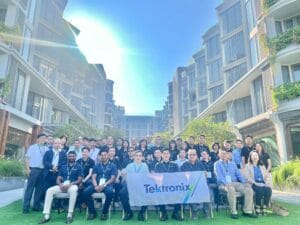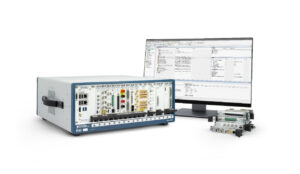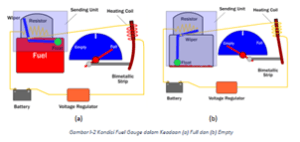Design and Development of a Hydroponic Solution Monitoring and Control System Based on Revolution Pi and LabVIEW NXG

A prototype capable of monitoring pH values and solution concentration/TDS (ppm) in a hydroponic solution. In addition, a control system is included, consisting of a peristaltic pump and a 5V pump. The monitoring data is processed/programmed using Revolution Pi (RevPi Core, RevPi AIO, and RevPi DIO) to run the control system so that the pumps can operate automatically if the hydroponic solution has either excess or insufficient nutrients, measured in terms of pH and TDS. Monitoring data can be viewed in the form of a Real-Time web page interface based on LabVIEW NXG.
Challenges
Developing a hydroponic nutrient solution monitoring and control system that operates automatically and in
Solutions
Design a monitoring and control system for hydroponic nutrient solutions using input devices including: pH sensor, TDS sensor, float switch level sensor, and flowmeter sensor, with output devices being the peristaltic pump and 5V pump. Input and output operations are programmed to run automatically using Revolution Pi, while monitoring can be carried out via the internet by accessing a real-time website built with LabVIEW NXG.
Hydroponics utilizes water without soil, prioritizing nutrient needs for plant growth. Literally, Hydro = water, and phonic = work, which generally means an agricultural cultivation system that uses water enriched with nutrient solutions instead of soil (Roidah, 2014). Hydroponics has two main techniques, NFT and DFT. In this project, the NFT (Nutrient Film Technique) method is used. The NFT system is a hydroponic method in which plant roots grow on a thin layer of circulating nutrients, ensuring sufficient water, nutrients, and oxygen supply (Dewi et al., 2021).
A critical aspect of hydroponic farming is the regular supply of water and nutrients to maintain optimal plant growth. However, consistent plant care can be problematic for farmers lacking time. To address this, technology can be used for monitoring and control, ensuring plant growth quality is maintained.
The purpose of this prototype is to build an IoT-based hydroponic monitoring system, enabling hydroponic farmers to remotely monitor their cultivation activities. Revolution Pi (Kunbus) components are used to process data and control input/output devices, while LabVIEW NXG (National Instruments) is used to program data handling and design the user interface displayed on a website.
Systems design
This system is designed using the following components:
- pH Sensor SKU: SEN0161 V2
- TDS Sensor SKU: SEN0244
- Flowmeter Sensor
- Float Switch Level Sensor
- Peristaltic Pump
- 5V Pump
- Protoboard
- Jumper Cables
- Ethernet Cable
- RevPi Core
- RevPi DIO
- RevPi AIO
- 24V Power Supply
- 5V Power Supply
Software used :
- LabVIEW NXG
- Putty
- XAMPP

System/Prototype Block Diagram
The overall system consists of 3 units: Input Block, Process Block, and Output Block
1. Input Block
This block consists of four sensors: float switch level sensor, pH sensor, TDS sensor (solution concentration), and flowmeter sensor (water flow). Their data is processed in the Process Block.
- Float Switch Level Sensor
Detects water height in a tank. It uses reed switches inside a rod and magnets inside a float. As the water lifts the float, the magnet activates or deactivates the reed switch (Tombeng et al., 2018). In this project, the sensor is used to detect the nutrient solution level in the hydroponic reservoir. - pH Sensor
pH meter sensor (SKU SEN0161) measures water quality and acidity. pH values range from 0 to 14: acidic (0–7) and alkaline (7–14). In this project, the sensor measures the acidity (pH) of the hydroponic nutrient solution in the reservoir (Karangan et al., 2019). - TDS Sensor (Solution Concentration)
Works on the principle of conductivity: two electrodes are supplied with DC current, generating changes in conductivity which are converted to voltage (Cahyani et al., 2016). In this project, the sensor measures the conductivity of the nutrient solution, converted to TDS in ppm. - Flowmeter Sensor
Installed in water pipes, it has a turbine with a Hall effect magnetic sensor producing pulses for each rotation. It measures water flow to determine whether the water pump is active or not (Rohman et al., 2017).
2. Process Block
Revolution Pi processes sensor data (Level, pH, TDS, Flowmeter). The data is then used to control the output (peristaltic pump and 5V pump) and sent to a database. The processed data is displayed in a web interface
3. Output Block
- 5V Submersible Water Pump
Transfers water. It must be submerged during operation to avoid rotor damage (Palestin et al., 2017). In this project, it adds water when the solution level falls below the threshold detected by the float switch sensor.
- Peristaltic Pump
A positive displacement pump designed for fluids transported through tubing without direct pump contact. It is used to add nutrient solution (AB mix) and adjust pH with pH up or pH down solutions when values fall outside acceptable ranges (Samudra, 2018).
LabVIEW NXG
LabVIEW NXG is used to design the web interface and program the data displayed on the website.
Revolution Pi receives analog sensor data (voltage in Volts) from the pH and TDS sensors. This data is converted using calibration formulas into desired variables
- Voltage (Volt): Output of TDS and pH sensors.
- TDS (ppm): Concentration of nutrient solution measured by the TDS sensor.
- pH: Acidity level of nutrient solution measured by the pH sensor.
Conversion Formulas:


Voltage to pH:
- X = Voltage (Volt)
- Y = pH value
- M = Slope
- B = Intercept


Voltage to TDS (ppm):
- X = Voltage (Volt)
- Y = TDS value (ppm)
- M = Slope
Each processed variable is sent to the database in .json format. The LabVIEW NXG program then converts the .json format into parameters that are displayed on the local server or website in real time. Monitoring data can be viewed by accessing the local server URL or the website URL
In addition to programming the conversion of .json data, LabVIEW NXG is also used to design the user interface (UI) of the website or local server. The user interface includes menus such as a dashboard and historical data. The dashboard is designed to resemble a SCADA display, showing parameter values (pH, TDS, level, and flowmeter) in real time. Meanwhile, the historical data display is designed to review past data for each parameter, presented in graphical form, along with timestamps indicating when the system was active or inactive.

The programs and user interfaces developed in LabVIEW NXG are built and deployed so that they can be accessed through the website or local server via their respective URLs.
If you have any questions regarding this prototype or general solutions for NI and Kunbus products, please contact Haliatech at:
📧 sales@haliatech.com
AUTHOR INFORMATION:
Aditya Rachmawan
Deardi Yusuf Prayoga
Reference :
Cahyani, H., Harmadi, H., & Wildian, W. (2016). Pengembangan Alat Ukur Total Dissolved Solid (TDS) Berbasis Mikrokontroler Dengan Beberapa Variasi Bentuk Sensor Konduktivitas. Jurnal Fisika Unand, 5(4), 371–377. https://doi.org/10.25077/jfu.5.4.371-377.2016
Dewi, I. Z. T., Ulinuha, M. F., Mustofa, W. A., Kurniawan, A., & Rakhmadi, F. A. (2021). Smart Farming: Sistem Tanaman Hidroponik Terintegrasi IoT MQTT Panel Berbasis Android. Jurnal Keteknikan Pertanian Tropis dan Biosistem, 9(1), 71–78. https://www.jkptb.ub.ac.id/index.php/jkptb/article/view/583
Karangan, J., Sugeng, B., & Sulardi, S. (2019). UJI KEASAMAN AIR DENGAN ALAT SENSOR pH DI STT MIGAS BALIKPAPAN. Jurnal Kacapuri : Jurnal Keilmuan Teknik Sipil, 2(1), 65. https://doi.org/10.31602/jk.v2i1.2065
Palestin, M., Pramana, S.T, M.T, R., & Prayetno, S.T., M.Eng, E. (2017). Prototipe Sistem Monitoring Dan Kontrol Suhu Air Pada Kolam Ikan Nila Berbasis Arduino Uno Dan Cayenne. Teknik Elektro UMRAH, 1–12. https://jurnal.umrah.ac.id/
Rohman, F. S. N., Fikri, A. A., Fuad, A. N., Rohim, R., & Firmansyah, R. (2017). Telemetri Flowmeter Menggunakan RF Modul 433MHz. JEEE-U (Journal of Electrical and Electronic Engineering-UMSIDA), 1(1), 8–14. https://doi.org/10.21070/jeee-u.v1i1.9
Roidah, I. S. (2014). Pemanfaatan Lahan Dengan Menggunakan Sistem Hidroponik. 1(2), 43–50.
Samudra, B. E. (2018). PENGUJIAN PROTOTYPE POMPA PERISTALTIK BERDIAMETER 40 CM.
Tombeng, M., Tedjo, C. A., Lembat, N. A., Studi, P., Informatika, T., Klabat, U., Level, W., & Switch, F. S. (2018). Implementasi Sistem Pengontrolan Tower Air Universitas Klabat Menggunakan Mikrokontroler Implementation of Water Tower System Control of Universitas Klabat Using Microcontroller. Cogito Smart Journal, 04(01), 60–71.







